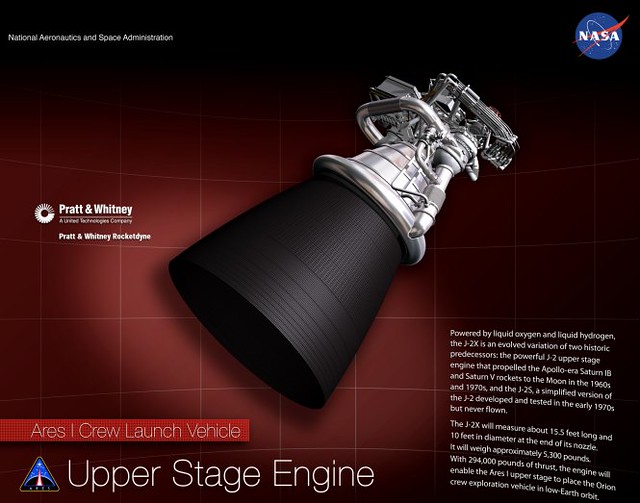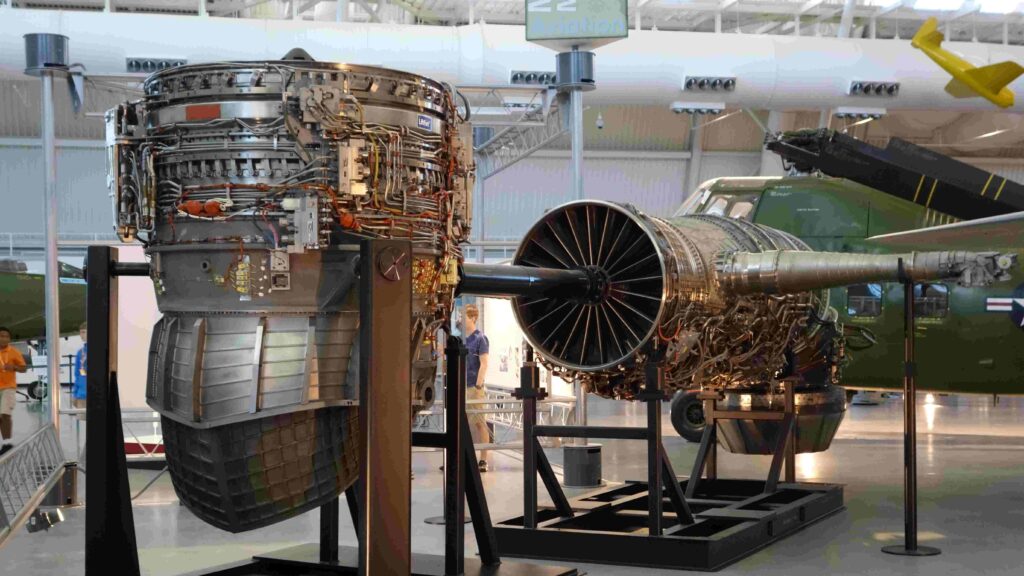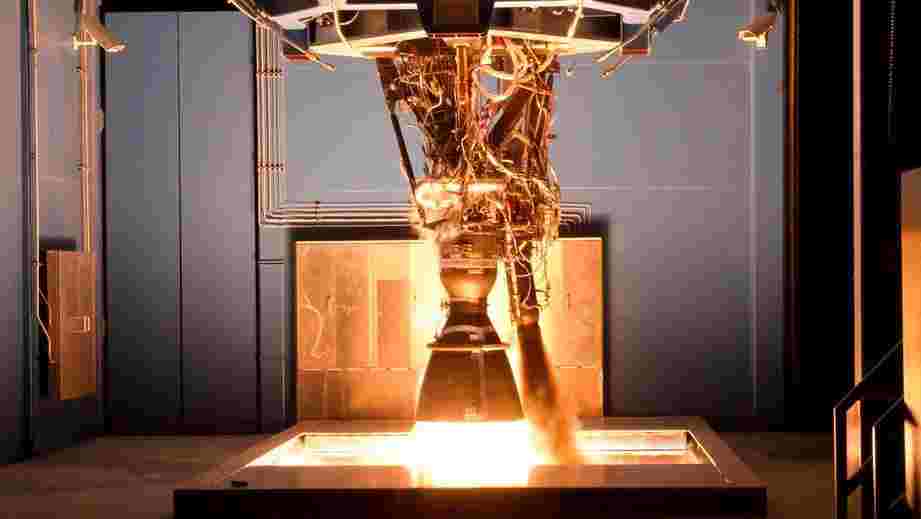Unbelievable! Elon Musk has just revealed something that could change the future of space travel forever — the brand-new Raptor 4 rocket engine.
According to Musk, this next-generation engine isn’t just a small upgrade. It’s ten times cheaper than SpaceX’s legendary Merlin 1D, and even more powerful than anything the company has ever built. Imagine being able to travel to Mars for the cost of an airplane ticket — that’s the vision behind Raptor 4.
So, what exactly makes this engine so revolutionary? How is it able to deliver so much power while slashing costs to a fraction? And when will we finally see it ignite for the first time? Let’s dive deep into the most mind-blowing revelation in SpaceX history.
The SpaceX Secret: Innovation Never Sleeps
If there’s one thing people often forget about SpaceX, it’s that the company never waits for perfection — it builds, tests, and iterates at lightning speed.

Take Starship, for example. Even before version 3 had completed its first flight, Musk and his team were already planning Starship V4, a sleeker, more powerful, and more efficient upgrade.
And just like the rocket, the engine line that powers it — the Raptor family — is evolving at a breakneck pace. While Raptor 3 is still undergoing testing, Raptor 4 has already been designed and quietly developed behind the scenes.
Then, on November 3rd, Elon Musk finally broke the silence on X (formerly Twitter).
He wrote:
“Raptor 3 will probably be two to four times better than Merlin in dollars per ton of thrust and will exceed Merlin in thrust-to-weight ratio. Raptor 4 should beat Merlin by more than 10 times in dollars per ton of thrust with further improvement in thrust-to-weight ratio and specific impulse.”
Those words sent shockwaves through the space industry. Why? Because it means SpaceX is about to build the most powerful and most cost-efficient engine ever made.
Raptor 4 vs. Merlin 1D: A 10x Leap in Power and Savings
Let’s break down what Musk actually means when he says “10 times cheaper per ton of thrust.”
The Merlin 1D, which currently powers Falcon 9 and Falcon Heavy, costs around $1 million per ton of thrust. That’s already one of the most cost-effective engines ever developed.
But Raptor 3? Musk claims it will slash that to around $250,000–$500,000 per ton of thrust — a massive improvement.
Now, here’s where it gets wild: Raptor 4 pushes the cost down to just $100,000 per ton. That’s ten times cheaper than the Merlin engine and three to four times cheaper than Raptor 3.
To put that into perspective, imagine a Starship V4 equipped with nine Raptor 4 engines — three sea-level and six vacuum variants. Each one producing 300 to 330 tons of thrust. That’s nearly 3,000 tons of total thrust on a single upper stage.
At that rate, the engine cost alone for a Mars-capable Starship could be around $300 million — an incredibly small number considering the mission’s scale.
Sure, once you factor in fuel, manufacturing, and operations, the total cost rises into the billions, but the engine efficiency leap alone could save hundreds of millions per mission.
That’s not just an upgrade. That’s a revolution.

How Powerful Will Raptor 4 Be?
Hint: Think Bigger Than Saturn V
Elon Musk has already teased that Raptor 4 will reach 300 tons of thrust per engine — and possibly more.
He even hinted that when Raptor hits that mark, a full 33-engine Starship booster could generate around 10,000 metric tons of thrust at liftoff. That’s about 22.5 million pounds of force, or roughly three times more powerful than NASA’s Saturn V — the rocket that took humans to the Moon.
If Musk’s estimates are modest (and they usually are), the real number could be closer to 11,000 tons of total thrust — about 16% more powerful than Raptor 3’s configuration.
Performance Beyond Power
But it’s not just about raw muscle. SpaceX is also focusing on efficiency and simplicity — two things that matter even more when you’re planning hundreds of launches to build a sustainable Mars colony.
Raptor 4: Simplicity Meets Superiority
One of Musk’s golden rules at SpaceX is simple:
“The best part is no part.”
That philosophy runs through the heart of Raptor 4’s design. Every new generation of the Raptor engine becomes simpler, lighter, and more efficient than the one before it.
- Raptor 1: ~2 metric tons
- Raptor 2: ~1.6 metric tons
- Raptor 3: ~1.525 metric tons
- Raptor 4: Expected to be even lighter
By eliminating flanges, bolts, and hundreds of small failure-prone parts, SpaceX reduces both weight and potential points of failure. Instead of using traditional mechanical fasteners, the company is moving toward fully welded joints — stronger, lighter, and leak-resistant.
The result?
A cleaner, more compact engine that’s faster to produce, easier to maintain, and less likely to fail under extreme conditions.
This simplicity doesn’t just save time — it saves millions.
The Manufacturing Miracle: One Raptor a Day
In the early days, producing a single Raptor 1 took around 11 days.
By Raptor 2, that dropped to 2 days.
Now, with Raptor 3, SpaceX is pushing toward one engine per day — and Raptor 4 could make that the norm.
This speed is essential for SpaceX’s mass production model, especially with the company’s goal to launch Starship multiple times per week.
At SpaceX’s McGregor, Texas test site, Raptor 3 engines have already completed over 6,000 hotfire tests, totaling 40,000 seconds of runtime — data that will directly fuel Raptor 4’s refinement.
The faster SpaceX builds and tests engines, the quicker it can scale launches — a key step toward true interplanetary reusability.

Efficiency Is the New Power
Specific Impulse: The Hidden Superpower
One of the most overlooked metrics in rocket design is specific impulse — a measure of how efficiently an engine uses its fuel.
For comparison:
- Merlin 1D: ~282 seconds (sea level)
- Raptor 2: ~330 seconds
- Raptor 3: Up to 350 seconds
- Raptor 4 (Vacuum Variant): Up to 380 seconds
That’s an incredible leap. A higher specific impulse means more thrust for less fuel, translating into greater range, more payload, and lower costs — all crucial for long-distance missions to the Moon and Mars.
Cooling, Pressure, and Durability Upgrades
SpaceX has also overhauled the cooling system. Each new Raptor generation improves its ability to handle extreme heat and pressure, ensuring engines can run longer and hotter without damage.
The chamber pressure of Raptor 3 already exceeds 350 bar — the highest of any operational engine on Earth. Raptor 4 is expected to push that boundary even further, possibly setting a new world record.
From Earth to Mars: The Bigger Picture
With each improvement, Raptor engines bring humanity closer to becoming a multi-planetary species.
Raptor 4 isn’t just about power. It’s about reusability, affordability, and sustainability — the three pillars of Musk’s space vision.
By cutting costs, simplifying design, and increasing performance, SpaceX could make mass-scale interplanetary transport a reality — not just for astronauts, but eventually for ordinary people.
Imagine booking a flight to Mars that costs the same as a business-class ticket to New York. That’s the dream Raptor 4 is designed to unlock.
Competition? There’s Hardly Any
While Blue Origin’s BE-4 engine boasts around 250 tons of thrust, it still lags behind in efficiency, cost, and scalability.
The BE-4 is methane-fueled like the Raptor, but it’s far more expensive and complex to produce. Once Raptor 4 enters the scene, the gap between SpaceX and its rivals will widen dramatically — potentially by an entire generation of technology.
That’s why aerospace experts say Raptor 4 isn’t just an upgrade — it’s an extinction-level event for competitors.

When Will Raptor 4 Make Its Debut?
Now comes the big question: When will we actually see Raptor 4 in action?
As of now, Raptor 3 is in full-scale production. Trucks loaded with the new engines have been spotted leaving SpaceX’s McGregor facility, heading straight to Starbase, Texas.
These engines are being fitted onto Booster 18 and Ship 39, both expected to form the first Starship V3 flight stack. That maiden flight is predicted for early next year.
If we look at SpaceX’s historical pattern, every new Raptor generation emerges roughly 18 months after the last one’s first flight.
That timeline suggests we could see the first Raptor 4 test as early as mid-2027, followed by a Starship V4 flight test in late 2027 or early 2028.
That schedule aligns perfectly with Musk’s lunar and Martian ambitions:
- 2028: Crew landings under NASA’s Artemis program
- Post-2028: Deploying permanent systems on Mars
Raptor 4 will likely be the engine that powers the first real human habitats beyond Earth.
The Road to Mars Starts Here
SpaceX’s engineering evolution isn’t random — it’s part of a calculated roadmap toward making Mars a second home for humanity.
Every generation of Raptor engine — from Raptor 1’s first fiery tests to Raptor 4’s game-changing simplicity — represents a step toward that destiny.
Raptor 4 could finally deliver what Musk has been promising for years: a fully reusable, affordable interplanetary vehicle that can take us from Earth to the Moon, Mars, and beyond.
Why Raptor 4 Changes Everything
Here’s a quick summary of why Raptor 4 has the world talking:
| Feature | Raptor 3 | Raptor 4 (Projected) |
|---|---|---|
| Thrust per Engine | 270–300 tons | 300–330 tons |
| Specific Impulse | ~350 sec | ~380 sec (vacuum) |
| Cost per Ton of Thrust | $250K–$500K | ~$100K |
| Weight | 1.525 tons | <1.5 tons |
| Chamber Pressure | 350 bar | 360–370 bar |
| Production Time | 1 day | <1 day |
| Launch Goal | Starship V3 | Starship V4 / Lunar Variant |
That’s not just incremental progress — it’s a quantum leap.
With these upgrades, SpaceX can launch more frequently, spend less money per flight, and accelerate humanity’s journey toward becoming an interplanetary species.
Conclusion: The Dawn of a New Space Era
Elon Musk has always said that “SpaceX’s ultimate goal is to make life multiplanetary.”
With the unveiling of Raptor 4, that dream feels closer than ever. This engine represents a new era in rocket science — one defined not by complexity, but by elegant simplicity, raw power, and unbelievable affordability.
If Musk’s predictions hold true, the Raptor 4 will make space travel as common as air travel, turning science fiction into everyday reality.
And when that first Starship V4 roars to life with 33 Raptor 4 engines beneath it, shaking the ground and lighting up the sky — we won’t just be watching another launch.
We’ll be witnessing the moment humanity truly begins its journey to the stars.
FAQs
1. What is SpaceX’s Raptor 4 engine?
The Raptor 4 is SpaceX’s next-generation methane-fueled rocket engine, revealed by Elon Musk in November 2025. It’s designed to be 10 times cheaper than the Merlin engine and significantly more powerful than Raptor 3, marking a huge leap in rocket technology.
2. How powerful is the Raptor 4 compared to Raptor 3?
The Raptor 4 produces about 300 to 330 tons of thrust per engine, roughly 16% more than Raptor 3. When mounted on a 33-engine Starship booster, total thrust could exceed 11,000 metric tons, making it the most powerful rocket engine cluster ever built.
3. Why is Raptor 4 ten times cheaper than Merlin 1D?
Because SpaceX focused on manufacturing simplicity and material efficiency. Raptor 4 eliminates hundreds of small components like bolts and flanges, replacing them with fully welded joints. This drastically reduces production cost, weight, and maintenance time.
4. What fuel does Raptor 4 use?
Just like its predecessors, Raptor 4 uses liquid methane (CH₄) and liquid oxygen (LOX) — known together as methalox. This fuel combination burns cleanly, enables reusability, and can be produced on Mars, making it ideal for interplanetary missions.
5. How efficient is Raptor 4?
Raptor 4’s vacuum variant is expected to reach a specific impulse of 380 seconds, meaning it can generate more thrust per unit of fuel than any other operational engine. That efficiency directly translates to lower launch costs and longer mission range.
6. When will SpaceX test the Raptor 4 engine?
Based on SpaceX’s development pattern, Raptor 4 could enter testing by mid-2027, following the full-scale production and flight of Raptor 3. The first Starship V4 launch powered by Raptor 4 engines may occur in late 2027 or early 2028.
7. What rocket will use Raptor 4 first?
Raptor 4 is expected to debut on Starship Version 4 (V4) — a more powerful and efficient variant of SpaceX’s fully reusable spacecraft. It will likely support both lunar missions under NASA’s Artemis program and early Mars transport flights.
8. How does Raptor 4 improve reliability?
Raptor 4’s design focuses on simplicity and durability. By removing failure-prone parts, improving cooling systems, and using integrated welded structures, it becomes more resistant to heat, pressure, and mechanical wear — key for multiple reuses.
9. How long does it take SpaceX to build a Raptor 4 engine?
Raptor 3 already takes about one day per engine to manufacture. Raptor 4, thanks to its streamlined design, could reduce that even further — possibly achieving sub-24-hour production cycles once mass manufacturing begins.
10. How much does a single Raptor 4 engine cost?
Elon Musk hinted that Raptor 4 could reach around $100,000 per ton of thrust. With an average thrust of 300 tons, each engine could cost roughly $30 million — an incredible bargain compared to traditional engines that cost hundreds of millions.
11. How does Raptor 4 compare to Blue Origin’s BE-4 engine?
While Blue Origin’s BE-4 produces around 250 tons of thrust, it’s heavier, more complex, and far more expensive. The Raptor 4 surpasses BE-4 in every key metric — thrust-to-weight ratio, efficiency, and production speed — making it the clear leader.
12. What makes the Raptor 4 eco-friendly?
Raptor 4 uses methane, a cleaner-burning fuel than kerosene. This reduces soot and carbon buildup, extending engine life and minimizing environmental impact. Plus, methane can be synthesized on Mars, allowing sustainable interplanetary travel.
13. What is the thrust-to-weight ratio of Raptor 4?
While final numbers are not yet confirmed, Musk stated that Raptor 4 will exceed Merlin’s thrust-to-weight ratio. This could mean a ratio above 200:1, giving SpaceX rockets more lifting power per kilogram of engine mass.
14. Will Raptor 4 help humans reach Mars faster?
Absolutely. With lower costs, higher power, and better efficiency, Raptor 4 enables more frequent Starship launches and cheaper interplanetary missions. This dramatically accelerates SpaceX’s timeline for building a permanent base on Mars.
15. How is Raptor 4 manufactured differently from earlier versions?
Raptor 4 will use automated welding systems, additive manufacturing (3D printing), and simplified plumbing architecture. This approach cuts weight, boosts reliability, and allows SpaceX to mass-produce engines at unprecedented speed.
16. What problems did Raptor 4 fix from earlier versions?
Raptor 4 improves on:
- Cooling efficiency (handles higher thermal loads)
- Reduced vibration and noise
- Simplified seals and joints
- Lower part count
- Faster production and maintenance
These upgrades address issues seen in Raptor 2 and Raptor 3, especially those related to overheating and fuel leaks.
17. Could Raptor 4 make space travel as affordable as air travel?
That’s Elon Musk’s goal. If Raptor 4 engines truly cut costs by 10x and Starship becomes fully reusable, a ticket to Mars could someday cost the same as a plane flight across the Earth — transforming space travel forever.
18. What’s next after Raptor 4?
While nothing official has been announced, it’s likely that SpaceX is already envisioning Raptor 5 — possibly an optimized interplanetary engine built specifically for Mars and lunar surface launches. Knowing Musk’s pace, Raptor 5 could appear before 2030.
Read More:
- FAA’s Weird Ban Decision Completely Ended SpaceX Daylight Launches! SpaceX Leader’s Reactions
- Tesla is launching a crazy new Rental program with cheap daily rates
- Tesla makes online ordering even easier
- Where to Buy Tesla Tiny House 2025: Your Complete Guide
- What Elon Musk SpaceX just did in both Florida & Starbase shocked NASA. Never seen before
- Elon Musk’s Insane Secret Starship Moon Landing Plan in 2026 Shocked NASA

